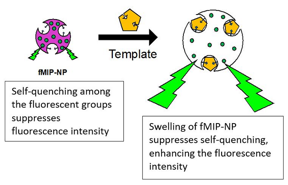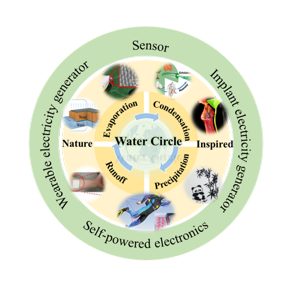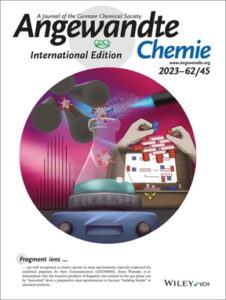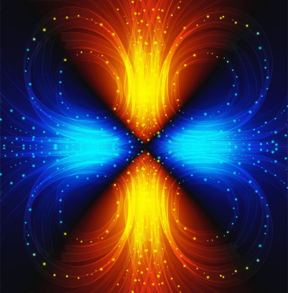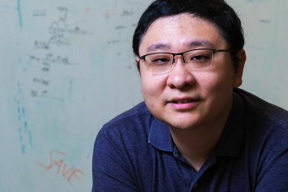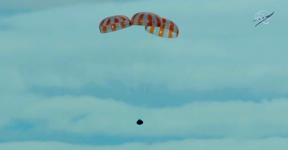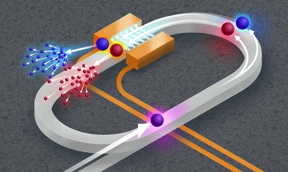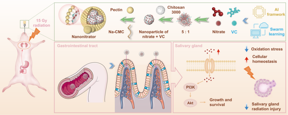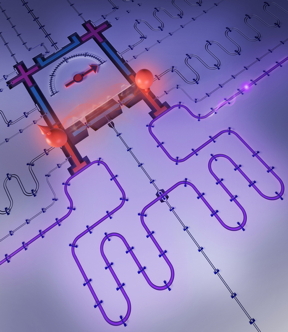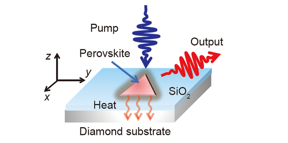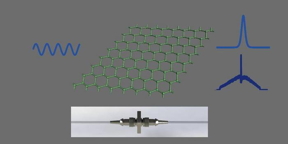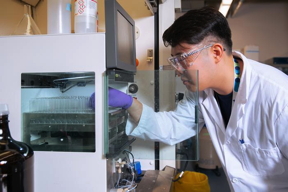Home > Press > New study opens the door to ultrafast 2D devices that use nonequilibrium exciton superdiffusion
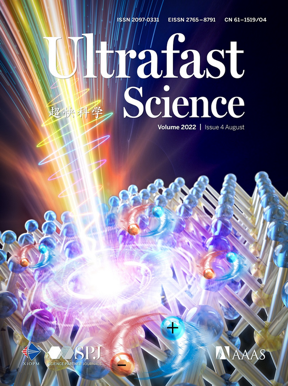 |
| New study opens the door to ultrafast 2D devices that use nonequilibrium exciton superdiffusion CREDIT Ultrafast Science |
Abstract:
Bound electron-hole pairs, or excitons, are working horses in the layered transition metal dichalcogenide semiconductors. Like the negative and positive charge carriers from which it forms, the exciton exhibits great mobility that ultrafast transient diffusion is required for ultrafast information processes.
New study opens the door to ultrafast 2D devices that use nonequilibrium exciton superdiffusion
Shanghai, China | Posted on February 10th, 2023Scientists at Tsinghua have been able to directly observe the ultrafast motion of nonequilibrium exciton in monolayers WSe2, MoWSe2, and MoSe2, immediately after they are excited with a femtosecond laser with the home-built pump-probe microscope—and it is found that these excitons travel at least 200 nm within 1 ps, much faster than previously expected.
“Generally, exciton diffusion is a linear process driven by the population gradient, where excitons migrate from high concentration region to low concentration region,” says Zhou at Tsinghua University. “We observe that exciton diffuses much faster than expected at the early time, we call it superdiffusion.”
Superdiffusion occurs in very short time scales. The effective diffusivity coefficient of this process can reach up to 102 - 103 cm2 s−1. This super-diffusive behavior improves the spatial migration of excitons, which is expected to break the traditional limitation of photovoltaic efficiency, or could be used for ultrafast electronic devices due to its nature of ultrashort time scales.
This work is helpful to better understand the ultrafast nonlinear diffusive behavior in strongly quantum-confined systems. It may be harnessed to break the limit of conventional slow diffusion of excitons for advancing more efficient and ultrafast optoelectronic devices.
This work is financially supported by the National Natural Science Foundation of China (no. 62075115) and the Tsinghua University Initiative Scientific Research Program.
####
For more information, please click here
Contacts:
Jiangbo She
Ultrafast Science
Copyright © Ultrafast Science
If you have a comment, please Contact us.Issuers of news releases, not 7th Wave, Inc. or Nanotechnology Now, are solely responsible for the accuracy of the content.
| Related Links |
| Related News Press |
News and information
![]() Graphene Flagship start-up Bedimensional closes a second €10 million investment round February 10th, 2023
Graphene Flagship start-up Bedimensional closes a second €10 million investment round February 10th, 2023
![]() Make them thin enough, and antiferroelectric materials become ferroelectric February 10th, 2023
Make them thin enough, and antiferroelectric materials become ferroelectric February 10th, 2023
Quantum Physics
2 Dimensional Materials
![]() Wafer-scale 2D MoTe₂ layers enable highly-sensitive broadband integrated infrared detector January 6th, 2023
Wafer-scale 2D MoTe₂ layers enable highly-sensitive broadband integrated infrared detector January 6th, 2023
![]() Team undertakes study of two-dimensional transition metal chalcogenides Important biomedical application, including biosensing December 9th, 2022
Team undertakes study of two-dimensional transition metal chalcogenides Important biomedical application, including biosensing December 9th, 2022
![]() Experimental nanosheet material marks a step toward the next generation of low-power, high-performance electronics December 9th, 2022
Experimental nanosheet material marks a step toward the next generation of low-power, high-performance electronics December 9th, 2022
Possible Futures
![]() Make them thin enough, and antiferroelectric materials become ferroelectric February 10th, 2023
Make them thin enough, and antiferroelectric materials become ferroelectric February 10th, 2023
Chip Technology
![]() Manufacturing advances bring material back in vogue January 20th, 2023
Manufacturing advances bring material back in vogue January 20th, 2023
![]() Vertical electrochemical transistor pushes wearable electronics forward: Biomedical sensing is one application of efficient, low-cost transistors January 20th, 2023
Vertical electrochemical transistor pushes wearable electronics forward: Biomedical sensing is one application of efficient, low-cost transistors January 20th, 2023
![]() Approaching the terahertz regime: Room temperature quantum magnets switch states trillions of times per second January 20th, 2023
Approaching the terahertz regime: Room temperature quantum magnets switch states trillions of times per second January 20th, 2023
Optical computing/Photonic computing
![]() Photonic Materials: Recent Advances and Emerging Applications February 10th, 2023
Photonic Materials: Recent Advances and Emerging Applications February 10th, 2023
![]() Manufacturing advances bring material back in vogue January 20th, 2023
Manufacturing advances bring material back in vogue January 20th, 2023
![]() New X-ray imaging technique to study the transient phases of quantum materials December 29th, 2022
New X-ray imaging technique to study the transient phases of quantum materials December 29th, 2022
![]() Experimental nanosheet material marks a step toward the next generation of low-power, high-performance electronics December 9th, 2022
Experimental nanosheet material marks a step toward the next generation of low-power, high-performance electronics December 9th, 2022
Discoveries
![]() Make them thin enough, and antiferroelectric materials become ferroelectric February 10th, 2023
Make them thin enough, and antiferroelectric materials become ferroelectric February 10th, 2023
Announcements
![]() Graphene Flagship start-up Bedimensional closes a second €10 million investment round February 10th, 2023
Graphene Flagship start-up Bedimensional closes a second €10 million investment round February 10th, 2023
![]() Fiber sensing scientists invent 3D printed fiber microprobe for measuring in vivo biomechanical properties of tissue and even single cell February 10th, 2023
Fiber sensing scientists invent 3D printed fiber microprobe for measuring in vivo biomechanical properties of tissue and even single cell February 10th, 2023
![]() Photonic Materials: Recent Advances and Emerging Applications February 10th, 2023
Photonic Materials: Recent Advances and Emerging Applications February 10th, 2023
![]() Make them thin enough, and antiferroelectric materials become ferroelectric February 10th, 2023
Make them thin enough, and antiferroelectric materials become ferroelectric February 10th, 2023
Interviews/Book Reviews/Essays/Reports/Podcasts/Journals/White papers/Posters
![]() Make them thin enough, and antiferroelectric materials become ferroelectric February 10th, 2023
Make them thin enough, and antiferroelectric materials become ferroelectric February 10th, 2023
Photonics/Optics/Lasers
![]() Photonic Materials: Recent Advances and Emerging Applications February 10th, 2023
Photonic Materials: Recent Advances and Emerging Applications February 10th, 2023
![]() Manufacturing advances bring material back in vogue January 20th, 2023
Manufacturing advances bring material back in vogue January 20th, 2023
![]() Researchers demonstrate co-propagation of quantum and classical signals: Study shows that quantum encryption can be implemented in existing fiber networks January 20th, 2023
Researchers demonstrate co-propagation of quantum and classical signals: Study shows that quantum encryption can be implemented in existing fiber networks January 20th, 2023
Quantum nanoscience
![]() Danish quantum physicists make nanoscopic advance of colossal significance January 27th, 2023
Danish quantum physicists make nanoscopic advance of colossal significance January 27th, 2023
- SEO Powered Content & PR Distribution. Get Amplified Today.
- Platoblockchain. Web3 Metaverse Intelligence. Knowledge Amplified. Access Here.
- Source: http://www.nanotech-now.com/news.cgi?story_id=57301
- 1
- 10
- 102
- 27th
- 2D
- 3d
- a
- Able
- accuracy
- accurate
- Achieve
- advance
- advances
- After
- algorithms
- and
- Announces
- Application
- back
- Bandwidth
- batteries
- battery
- become
- Better
- biomedical
- boost
- boston
- Break
- bring
- broad
- broadband
- call
- carriers
- Center
- CGI
- charge
- China
- Closes
- COM
- comment
- computing
- concentration
- conducting
- content
- conventional
- could
- credit
- Crystal
- December
- demonstrate
- demonstrates
- develop
- Development
- develops
- Devices
- Diego
- Diffusion
- directly
- discover
- Door
- driven
- Early
- Effective
- efficiency
- efficient
- Electronic
- Electronics
- emerging
- enable
- encryption
- energy
- Engineers
- enough
- Ether (ETH)
- Even
- excited
- exhibits
- existing
- expected
- fast-charging
- faster
- feat
- February
- financially
- flagship
- flow
- forms
- Forward
- found
- Foundation
- Frequency
- from
- generation
- gif
- great
- Growing
- helpful
- High
- high-performance
- highly
- HTTPS
- image
- Imaging
- immediately
- implemented
- important
- improves
- in
- Inc.
- Including
- information
- Initiative
- integrated
- investment
- IT
- January
- Japan
- laser
- layered
- layers
- lead
- LIMIT
- limitation
- links
- lithium
- Low
- Magnets
- make
- material
- materials
- measuring
- metal
- migrate
- migration
- million
- mobility
- molecular
- molecule
- more
- more efficient
- motion
- nanotechnology
- National
- Natural
- Nature
- negative
- net
- Neutral
- New
- news
- next
- Noise
- novel
- nuclear
- Nuclear physics
- observe
- ONE
- open
- opens
- optimal
- organic
- Origin
- Other
- pairs
- PHP
- Physics
- plato
- Plato Data Intelligence
- PlatoData
- please
- population
- positive
- Post
- posted
- previously
- process
- processes
- Program
- projects
- promising
- properties
- Quantum
- quantum computing
- quantum information
- Quantum sensors
- qubits
- reach
- recent
- reducing
- regime
- region
- Releases
- required
- research
- researchers
- responsible
- return
- Room
- San
- San Diego
- Save
- says
- scales
- Science
- Scientific Research
- scientists
- Search
- Second
- secondary
- Semiconductors
- sensors
- shanghai
- Share
- Short
- Shows
- signals
- single
- slow
- Spatial
- start
- Start-up
- States
- Step
- strong
- strongly
- Study
- submit
- Supported
- Surface
- surprising
- Switch
- system
- Systems
- team
- The
- time
- times
- to
- toward
- traditional
- transition
- travel
- trillions
- Tsinghua
- understand
- unique
- university
- unprecedented
- us
- use
- vivo
- Wave
- wearable
- which
- while
- within
- Work
- working
- x-ray
- Yahoo
- zephyrnet










